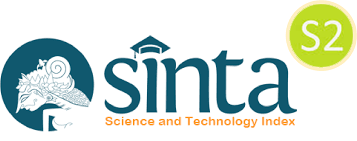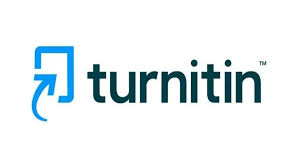How to Rescue the K-Pop Choreography: A Comparative Copyright Study with the United States
DOI:
https://doi.org/10.18196/iclr.v7i1.22705Keywords:
Choreography, Copyright, Korean Copyright Act, K-PopAbstract
The popularity of K-Pop has brought about the growth of Korean music industry and enriched most of the participants of the music industry. Unfortunately, choreographers who have created iconic dance moves did not receive proper appreciation, mainly due to the lack of copyright protection. This normative legal research employing both statutory and comparative approaches. The author examined the legal framework and industrial structure relating to choreographic works in South Korea and in the United States and made comparison between both jurisdictions. It is found that although choreographers in both countries are now actively seeking for protection of their copyright, nevertheless, the legal framework in the United States is more accommodative for the protection of choreographic works as compared to its Korean counterpart. Amendment of the Korean Copyright Act as well as changes in the industrial environment and custom are required to provide more adequate legal protection of choreographic works in South Korea
References
Adams, Skylar , ‘Dancer Noze Has Not Been Paid Any Royalties for Her Viral “Hey Mama” Dance — Here’s Why’, Koreaboo, 2021 <https://www.koreaboo.com/news/dancer-noze-royalties-hey-mama-dance/> [accessed 24 May 2024]
‘Choreography’, Wikipedia, 2021 <https://en.wikipedia.org/wiki/Choreography> [accessed 31 May 2024]
‘Copyright Statistics Collection (List) > Publications > Materials > Korea Copyright Commission’, Www.copyright.or.kr <https://www.copyright.or.kr/information-materials/publication/the-copyright-statistics/list.do> [accessed 1 June 2024]
‘Fourth Estate Public Benefit Corp. V. Wall-Street.com, LLC, 586 U.S. ___ (2019)’, Justia Law, 2019 <https://supreme.justia.com/cases/federal/us/586/17-571/>
Fuhrer, Margaret, ‘A Labor Movement for the Artists Who Make Popular Culture Move’, The New York Times, 10 March 2022, section Arts <https://www.nytimes.com/2022/03/10/arts/dance/choreographers-guild.html>
———, ‘JaQuel Knight: Changing the Game, from Choreography to Copyright’, Dance Magazine, 2022 <https://www.dancemagazine.com/jaquel-knight/#gsc.tab=0> [accessed 2 June 2024]
Han, Yoon Sun, ‘Research on Copyright Activation Measures for Choreographers’, The Journal of Korean Dance, 41.4 (2023), 245–70 <https://doi.org/10.15726/jkd.2023.41.4.012>
Johnson, Ali, ‘Copyrighting TikTok Dances: Choreography in the Internet Age’, Washington Law Review, 96.3 (2021), 1225–74
Joo, SangDon, ‘Www.ipdaily.co.kr’, Ipdaily.co.kr, 2023 <https://www.ipdaily.co.kr/2023/12/25/08/55/31/28931/%EC%95%88%EB%AC%B4-%EC%A0%80%EC%9E%91%EA%B6%8C-%EB%93%B1%EB%A1%9D-%EC%96%B4%EB%A0%A4%EC%9A%B4-%EC%9D%B4%EC%9C%A0%EB%8A%94-%EB%B6%88%EB%B6%84%EB%AA%85%ED%95%9C-%EB%93%B1%EB%A1%9D/?ckattempt=1> [accessed 24 May 2024]
Joyce, Craig, Marshall Leaffer, Peter Jaszi, Tyler Ochoa, and Michael Carroll, Copyright Law, Ninth (LexisNexis, 2013)
Kathleen Abitabile and Jeanette Picerno, Dance and the Choreographer's Dilemma: A Legal and Cultural Perspective on Copyright Protection for Choreographic Works, 27 Campbell L. Rev. 39 (2004).
Kees, Laura A. , and Jacob S. Wharton, ‘Supreme Court Clarifies Copyright Law| Womble Bond Dickinson’, Www.womblebonddickinson.com, 2019 <https://www.womblebonddickinson.com/us/insights/alerts/supreme-court-clarifies-copyright-law> [accessed 3 June 2024]
Kim, Jaebum , ‘A Study on Music Works Copyright in the Digital Age’, 2018
Kim, Joy , ‘Potential Crisis and Opportunity in the K-Pop Choreography Copyright’, International Journal of Advanced Culture Technology, 9.3 (2021), 253–58 <https://doi.org/10.17703/IJACT.2021.9.3.253>
Kim, Yun ji, ‘Key Issues in Establishing Copyright Policies for Dance: A Focus on K-Pop Choreographic Works’, Mirae Munhwa, 9 (2024)
Korea Copyright Commission, ‘Registration Status < Registration Search < Home’, Www.cros.or.kr <https://www.cros.or.kr/psnsys/cmmn/infoPage.do?w2xPath=/ui/twc/sch/regSerc/regSerc.xml> [accessed 19 May 2024]
‘Kpop Industry Statistics • WorldMetrics’, Worldmetrics. Org, 2024 <https://worldmetrics.org/kpop-industry-statistics/#:~:text=Highlights%3A%20The%20Most%20Important%20Statistics%201%20BTS%2C%20arguably> [accessed 24 May 2024]
Lee, Enyoung, ‘“If K-Dance Is to Become Popular among Choreographers around the World, Copyright Recognition Is Required.”’, Economychosun.com, 2024 <https://economychosun.com/site/data/html_dir/2024/03/15/2024031500002.html> [accessed 31 May 2024]
Liu, Marian, Youjin Shin, and Shelly Tan, ‘Why Is K-Pop so Popular?’, Washington Post, 2021 <https://www.washingtonpost.com/arts-entertainment/interactive/2021/kpop-bts-youtube-twitter-blackpink/>
‘Online Service Provider’s Liability for Aiding and Abetting Copyright Infringement Case [Supreme Court Important Decision Sentenced on February 28, 2019] - Case Law Breaking News’, Www.scourt.go.kr, 2019 <https://www.scourt.go.kr/portal/news/NewsViewAction.work?seqnum=6567&gubun=4> [accessed 2 June 2024]
Park, Si-Soo, ‘What about the Choreographer of Gangnam Style? – the Korea Times’, The Korea Times, 2014 <http://www.koreatimesus.com/what-about-the-choreographer-of-gangnam-style/> [accessed 24 May 2024]
Ravetto-Biagioli, Kriss, ‘Whose Dance Is It Anyway?: Property, Copyright and the Commons’, Theory, Culture & Society, 38.1 (2020), 026327642092553 <https://doi.org/10.1177/0263276420925534>
Seng, Daniel, ‘COPYRIGHTING COPYWRONGS: AN EMPIRICAL ANALYSIS of ERRORS with AUTOMATED DMCA TAKEDOWN NOTICES’, Santa Clara High Technology Law Journal, 37.2 (2021), 119
Shin, Sung Ah, ‘A Study on Copyright of Choreography in Korea in Case of K-POP Music Dance’ (2015)
Sohee Baek, ‘Lia Kim , Please Label Choreographer Same as Composer... The First Step in Discussions on Enforcement of Copyright’, Aju Economy, 2023 <https://www.ajunews.com/view/20231211143729922> [accessed 3 June 2024]
Song, Sangho, ‘[Unraveling Culture Story] “K-Dance” Is Followed by Everyone, But… Where Is the Choreographer’s “Copyright Protection”?’, Gyeonggi Ilbo, 2022 <https://www.kyeonggi.com/article/20220726580155> [accessed 2 June 2024]
Sydney L. Solferino, One Small Step on TikTok, One (Possibly) Giant Leap for the Dance Community: How TikTok Spearheaded a Change in the Seemingly Stagnant Field of Copyright Law, 32 Cath. U. J. L. & Tech 145 (2023).
Sye, David, ‘Literally Stealing the Show: A Brief (and Recent) History of Dance Copyright’, Intellectual Freedom Blog, 2021 <https://www.oif.ala.org/literally-stealing-the-show-a-brief-and-recent-history-of-dance-copyright/> [accessed 31 May 2024]
‘Welcome to the Website of the Ministry of Culture, Sports and Tourism of the Republic of Korea.’, Mcst.go.kr, 2019 <https://www.mcst.go.kr/english/index.jsp>
Whiting, Evie, ‘Square Dance: Fitting the Square Peg of Fixation into the Round Hole of Choreographic Works’, Vanderbilt Law Review, 65.4 (2012), 1261
‘Who We Are’, Choreographers Guild <https://choreographersguild.org/who-we-are/> [accessed 3 June 2024]
Wong, Ivy, ‘Point Choreography in K-Pop’, Medium, 2021 <https://ivywxy.medium.com/point-choreography-in-k-pop-d392a27089e2> [accessed 24 May 2024]
Yeoh, Francis, ‘Why Don’t Choreographers Copyright Their Works?’, Dance Chronicle, 45.2 (2022), 155–72 <https://doi.org/10.1080/01472526.2022.2064162>
Copyright.or.kr, 2023 <https://www.copyright.or.kr/information-materials/publication/the-copyright-statistics/list.do.> [accessed 4 June 2024]
Downloads
Published
Issue
Section
License
By publishing with Indonesian Comparative Law Review, authors agree to the following terms:
1. Authors retain the copyright to their work and grant Indonesian Comparative Law Review the right of first publication, while also licensing the work under a Creative Commons Attribution License (CC BY 4.0). This license permits others to share the work, provided they acknowledge the author and the initial publication in this journal.
2. Authors may enter into separate agreements for non-exclusive distribution of the published version of their work, such as posting it to an institutional repository or including it in a book, with acknowledgement of its initial publication in this journal.
3. Authors are encouraged to share their work online, for example on institutional repositories or personal websites, both before and during the submission process. This practice can lead to productive exchanges and increased citation of published work.



